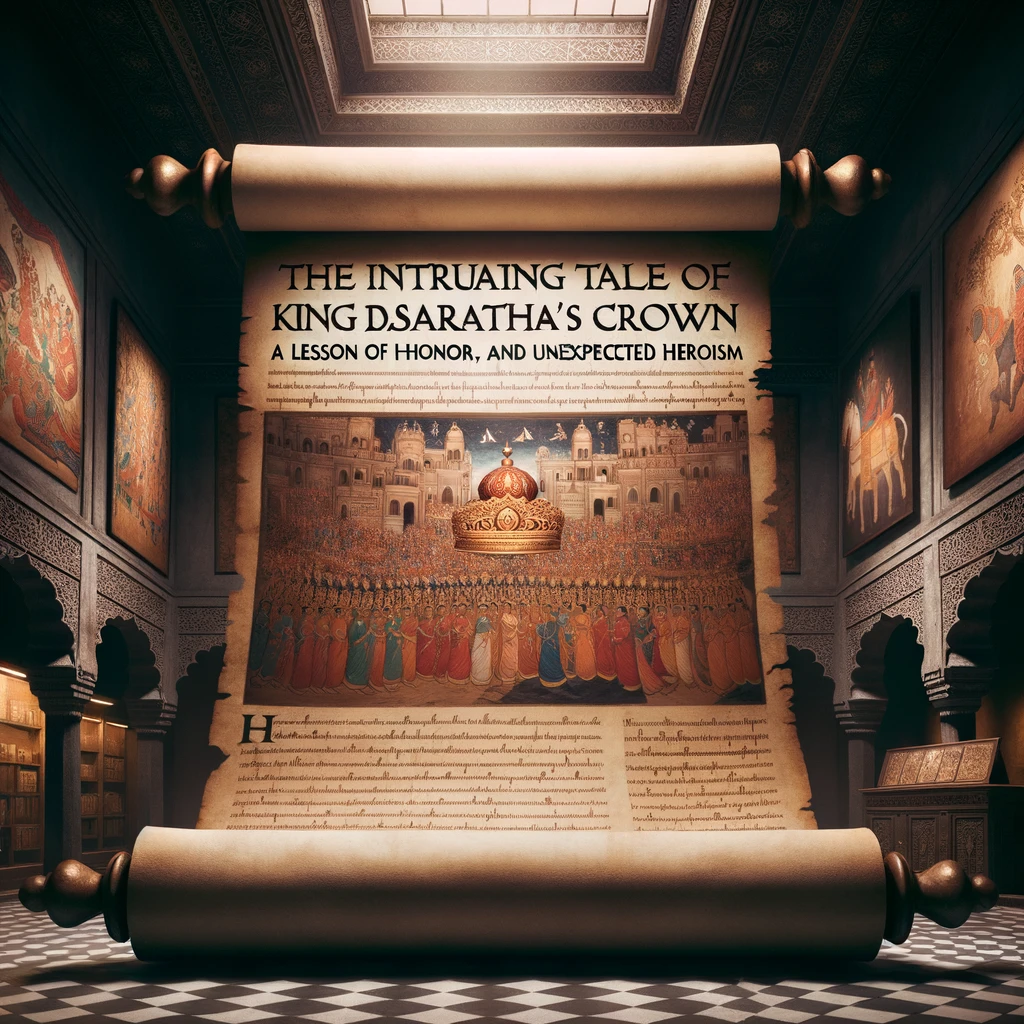
The Intriguing Tale of King Dasharatha’s Crown: A Lesson in Honor, Sacrifice, and Unexpected Heroism

Dive into the riveting story of King Dasharatha’s crown—a tale that interweaves myth, morality, and the timeless virtues of honor and sacrifice. This article caters to teachers, students, and researchers interested in epic stories and their underlying lessons.
Table of Contents
- Introduction
- The War Between King Dasharatha and Bali
- Kaikeyi’s Role and the Loss of the Crown
- The Coronation of Shri Ram and the Return Quest
- Angad’s Challenge in Ravana’s Assembly
- The Legacy and Impact of the Crown
- Conclusion
Introduction
The story of King Dasharatha’s crown is not just a tale from Indian epic mythology, but also an insightful narrative that holds valuable lessons on honor, sacrifice, and moral courage. Set in the context of the Ramayana, this story revolves around King Dasharatha of Ayodhya, his queen Kaikeyi, and the ramifications of losing a symbol as potent as the royal crown.
The War Between King Dasharatha and Bali
King Dasharatha, the father of Lord Rama and ruler of Ayodhya, once ventured into the forest and encountered Bali, a formidable opponent. Bali had a unique boon: anyone who caught his gaze would involuntarily surrender half of their power to him. This made Bali almost invincible in combat, tilting the odds against King Dasharatha.

Kaikeyi’s Role and the Loss of the Crown
Kaikeyi, one of Dasharatha’s three queens, was not just a royal consort but also a proficient warrior. She often accompanied her husband into battles and did so during this fateful encounter. After a fierce fight, King Dasharatha was inevitably defeated, and as a penalty, he had to leave behind his royal crown, much to the distress of Queen Kaikeyi.
The Coronation of Shri Ram and the Return Quest
Years later, when the time came for the coronation of Shri Ram, the loss of the crown became a crucial issue. It was Kaikeyi who took the controversial step to send Ram into exile, but with an underlying motive—to retrieve the lost crown and restore the family’s honor.
Angad’s Challenge in Ravana’s Assembly
Angad, son of Bali, was assigned by Ram to get back the crown. Sent as an envoy to Ravana’s court, Angad performed an astonishing feat. He planted his foot in the assembly and issued a challenge to Ravana’s warriors to move it. When none succeeded, Ravana attempted it himself, causing the coveted crown to fall from his head, thereby restoring it to its rightful owners.
The Legacy and Impact of the Crown
The story of King Dasharatha’s crown serves as a potent symbol of the inexorable link between honor and sacrifice. Those who dishonored the crown—Bali and Ravana—ultimately met tragic ends, while those who acted in the interest of restoring its dignity were celebrated as heroes.
Conclusion
The narrative of King Dasharatha’s crown stands as a testament to the complexities of honor, sacrifice, and the unforeseen consequences of seemingly straightforward actions. It also elevates Kaikeyi from a perceived villain to a nuanced character acting in the broader interest of her family and kingdom. This story is a compelling reminder that acts of courage and kindness, no matter how small, can bring about significant changes, impacting generations to come.
Through these historical and mythological lenses, teachers, students, and researchers can find a rich tapestry of lessons applicable to various aspects of life and moral conduct.